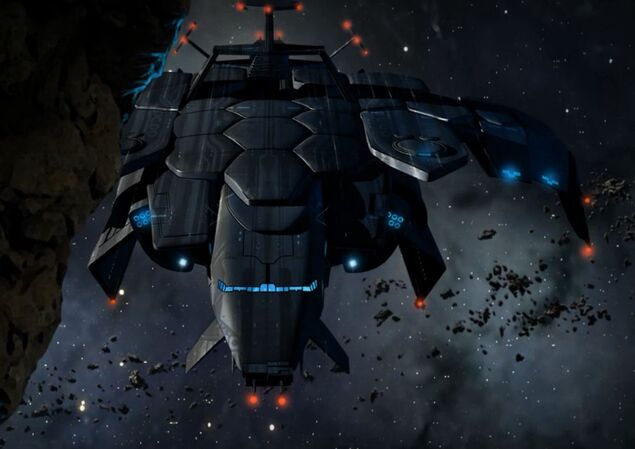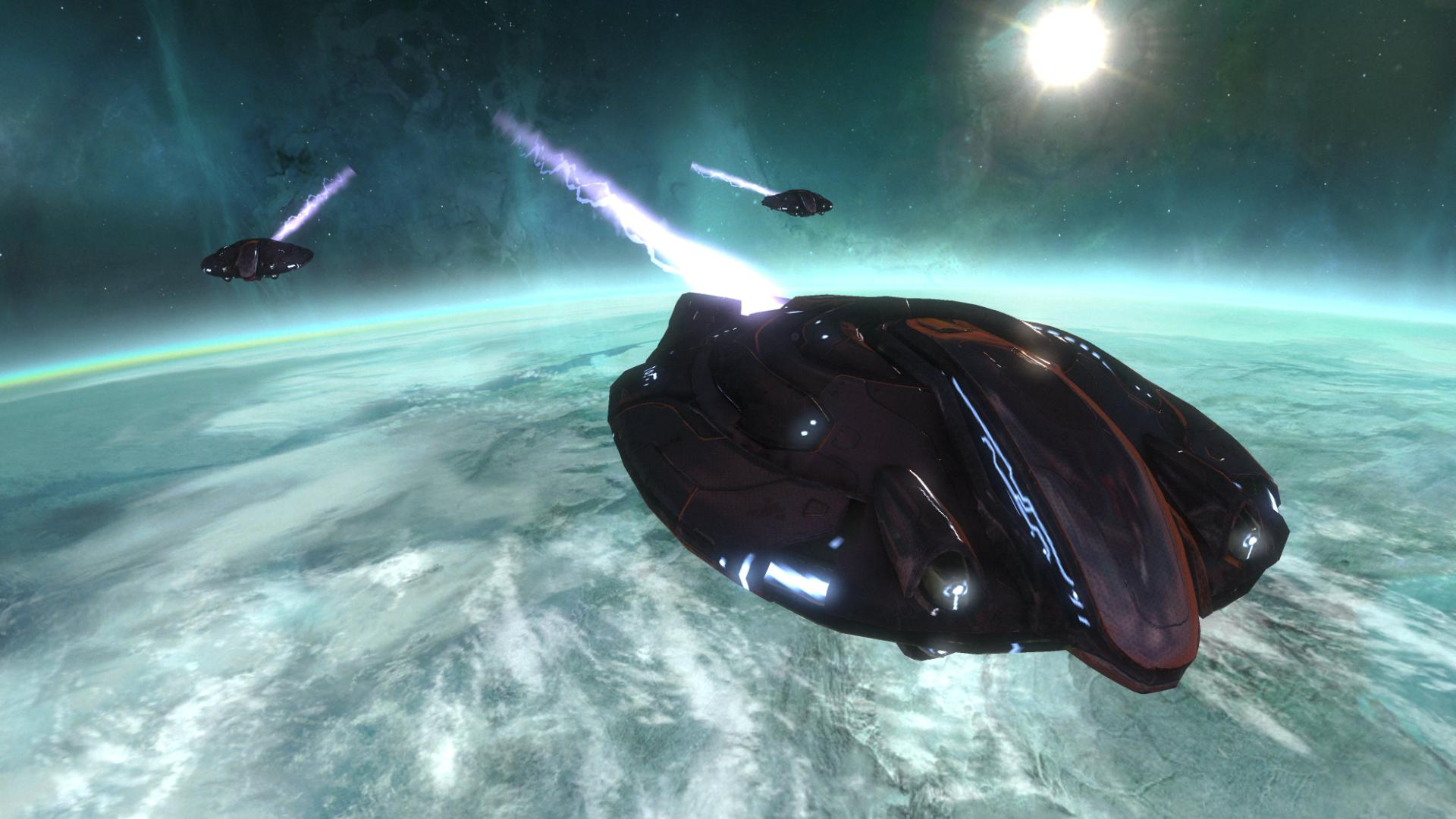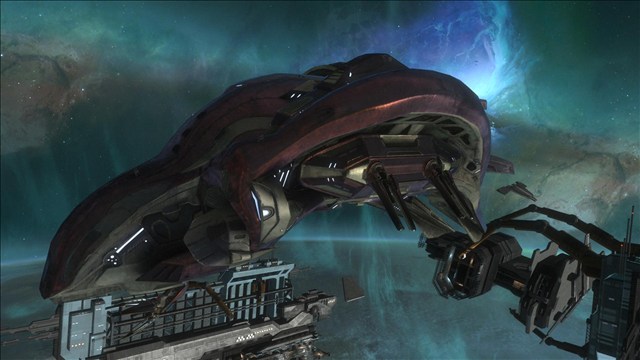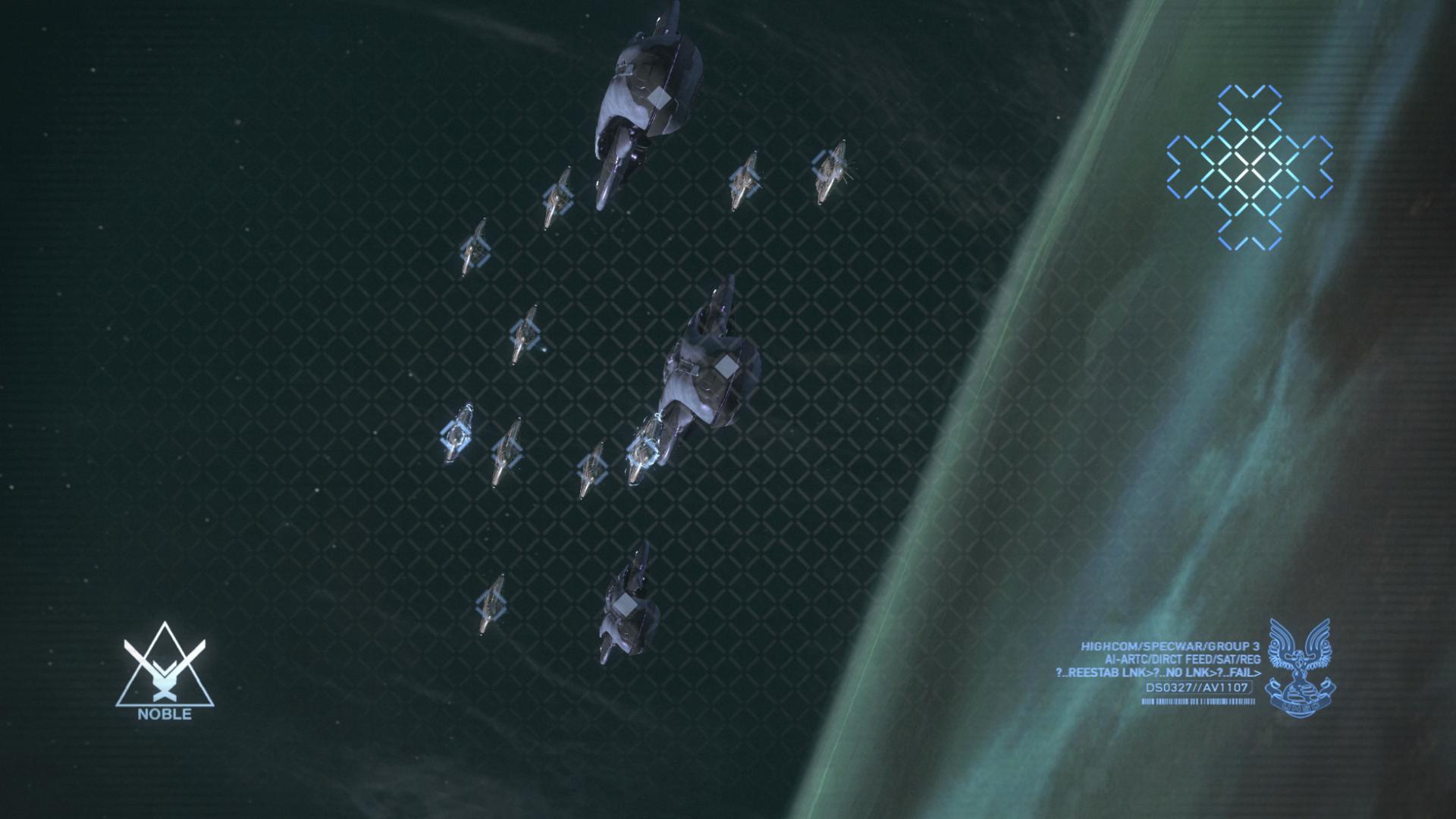 Alaric Wolf Kerensky, on 21 January 2012 - 11:17 PM, said:
Alaric Wolf Kerensky, on 21 January 2012 - 11:17 PM, said:
Excellent point! EvE would be ridiculously hard to defeat for a large number of reasons.
1 - Capitals and Super-Capitals:
The largest ships in EvE are 18km in length, with shields, armor, standard weapons, and Super-weapons all of incredible size. Considering an Erebus class Titan could likely 1-shot a Star Destroyer with the Aurora Ominate doomsday weapon, and after that is used it still retains a MASSIVE primary arsenal of blasters firing blobs of antimatter. Very few series are going to be able to match the firepower and defensive capabilities of EvE ships 1v1, but then you have to account for their numbers! EvE players have built a few hundred, if not a thousand, Titans and Super-Carriers, backed by a few thousand Dreadnought and Carrier capital ships, all of which would be capable of downing Imperial Star Destroyers, or a pathetic, shieldless Borg Cube.
Bigger isn't always better.

While the ships may be large, they are rather slow - the interceptor frigates have a top sub-light speed in the 500 m/s range (0.000002
c - or 1800kph/1116mph, about the same range as the top speeds of most modern fighter aircraft), while the top sub-light speed of a titan is on the order of 80 m/s (0.0000002
c - 288kph/179mph, about
half of the top speed of an average modern F1 racer).
By contrast, a High Guard XMC heavy cruiser has a top safe sublight speed of 0.40
c and an acceleration of 500,000 m/(s^2), and the Starfleet ships have top sublight speeds as high as 0.80
c - many orders of magnitude greater than EVE ships in both top-end and acceleration.
Even the
Macross-class battlefortresses seem to be faster than EVE ships - "the
Macross class can nominally achieve a maximum delta-v of 225 kps at the cruising acceleration of 0.1 gees, a maximum delta-v of 44.9 kps at the battle acceleration of 1.0 gees, and a delta-v of at most 12.6 kps at the flank acceleration of 2.5 gees".
The larger EVE ships also seem to be relatively lightly-armed for their size - the titans seem to have only 6-8 turret hardpoints (with titan-scale turrets tracking very slowly (on the order of 0.001925 rad/sec), making them pretty much useless for point-defense work or following anything that
does have some speed to it; the frigate-scale turrets are a bit better about tracking speed (on the order of about 0.13 rad/sec), but they lack the damage output of the larger guns.)
Their guns also have relatively short ranges - their railguns' optimal range is on the order of 105.60km for the larger guns and 6.60km for the smaller guns, while their laser weapons have ranges on the order of 12km (frigate-scale weapons) to 88km (titan-scale weapons).
While there seem to be no canon ranges readily-available for the doomsday weapons, the fact that they're so focused as to only affect a single ship and can only be fired once every 10 minutes or so does place significant restrictions on their effectiveness.
Their missile technology (for the relatively few ships that do carry missile launchers, let alone do so in any significant numbers) doesn't seem to be much better, with missile ranges on the order of 17km (light missiles) to 85km (citadel cruise missiles) and missile flight speeds between 2200m/s (7920kph/4910mph/0.000007
c for light missiles) and 4500m/s (16200kph/10044mph/0.000015
c for CCMs).
With regard to drones and fighters, it seems that even the largest ships are limited by volume to ~50 fighters or 50000 light combat drones, while their bandwidth limits them to fielding/controlling on the order 500 fighters or 2500 light combat drones.
So, really, any one of the larger ships (super-carriers, to be precise) may have a substantial CAG. However, even the larger fighter-type drones are only about as fast and as durable as the average missile and have very short optimal ranges on their own weapons (on the order of 1.5km), so they can likely be outrun and/or gunned-down by point-defense fire from other franchises in short order, before they have any chance to inflict any notable damage on other franchises' ships.
I will grant that EVE ships are sturdy (one has to get through the (regenerative) shields and then the armor (which often includes nano-tech repair/regeneration systems) to even begin to damage the actual hull structure), but they are far from invulnerable to even their own (under-ranged, under-powered) weapons, let alone that can be thrown out by the likes of the High Guard (Andromeda), Starfleet (Star Trek), the Tau'ri or Goa'uld or Asgard or Replicator or Ori fleets (Stargate), or the Forerunner or UNSC or Covenant fleets (Halo).
 Alaric Wolf Kerensky, on 21 January 2012 - 11:17 PM, said:
Alaric Wolf Kerensky, on 21 January 2012 - 11:17 PM, said:
2 - Attrition:
As rollermint stated, EvE pilots CANNOT be fully killed, as they always have a fresh clone rapidly grown, into which their consciousness is transferred upon death. To kill off an EvE pilot, you would have to first eliminate all of their clones, then kill the pilot. However with the pilot being able to transfer their mind to any of their clones at will, they can effectively be everywhere at any time. With a nearly endless supply of pilots, and spacecraft nearly as limitless, EvE will beat anything on attrition.
Well, the system is far from perfect or unassailable.
In
The Burning Life, it is demonstrated that there is
at least one organization in the EVE universe that is capable of subverting the whole capsuleer reincarnation system with but a literal handful of individuals with the right access codes.
Additionally, the actual number of capsuleers (pod pilots, which the players represent) is implied to be relatively small (with there being on the order of 350,000 subscribers as of July 2011 - this gives us an upper limit on the number of capsuleers and their ships available).
Also, according to the EVE wiki,
there are only about 158 known titans at the time of this writing.
Moreover, is should be noted that the stations where the clone bodies and reincarnation systems are kept are themselves far from invulnerable...
 Alaric Wolf Kerensky, on 21 January 2012 - 11:17 PM, said:
Alaric Wolf Kerensky, on 21 January 2012 - 11:17 PM, said:
3 - Fast Travel
EvE ships can travel at 6AU per second, and there are ways to tear space to travel light years in an instant, such as Titan Bridging, where a Titan tears space in a jump, and can piggy-back hundreds of supporting Battleships with them. With their high mobility, EvE ships have a powerful force multiplier at their disposal, which could assist in pilots killed in one battle, being 'reborn', jumping into a fresh and waiting ship, and rejoin the same battle quickly.
Most EVE ships with their own jump engines seem to have a jump range limited to at most 5 light years (which is rather short for an inter-system FTL system, by comparison to the other franchises).
Also, as I've noted above, the
sub-light speeds of EVE ships - being on the same order as modern fighter jets or race cars - are actually very slow by comparison to other franchises.
They may be able to make
in-system warp jumps at a speed of 6 AU/sec (an impressive 498.67
c), but IIRC they cannot engage targets (or be engaged by opponents) while doing so (though, they are vulnerable immediately before engaging and after disengaging their warp drives).
 Alaric Wolf Kerensky, on 21 January 2012 - 11:17 PM, said:
Alaric Wolf Kerensky, on 21 January 2012 - 11:17 PM, said:
4 - 'Tanking' and Remote Repair:
When in combat, EvE ships utilize a number of systems to harden their shields, armor, and hull against all types off attacks, mitigating the incoming damage. Other systems simultaneously rejuvenate shields and armor to keep the ship alive and fighting. While a lone ship can only 'tank' so much damage, do to rate of damage and energy consumption, a fleet can incredibly bolster tanking effectiveness through Remote Repair. Carriers and logistics ships specialize in boosting the defenses of friendly ships by transferring shields, while not harming their own. A fleet outfitted with increased shields to resist alpha damage, and with a couple hundred carriers with skilled pilots, becomes nearly unbreakable, and could effectively withstand damage for decades while returning a withering barrage of fire as long as ammunition is in supply. And laser-equipped ships only need to ensure that their capacitors remain charged to continue firing. However, because it is impossible to gauge relative damage potentials across different universes, it is hard to tell if something such as the Macross Uber-cannon brought up before could be resisted, or how weak/strong Macross shields are compared to those in EvE.
While the ability to execute remote repair operations is impressive, it does raise a number of issues for EVE fleets:
The ships that carry the remote repair systems often do so at the expense of a lack of offensive or defensive (or both) of their own, making them overly dependent on their non-remote-repair-capable brethren for protection.
The ships that depend on remote-repair-capable ships to sustain them generally sacrifice some degree of their own repair and redundancy systems in order to carry more or heavier armaments; should the remote-repair-capable ships fall, these other ships would be more susceptible to damage than might have otherwise been the case.
The remote repair systems are actually rather limited in their effectiveness - they have a rather short effective range (on the order of 16km for capital-scale modules), are energy intensive (activation energy requirements are in the high-gigajoule to low-terajoule range), and are limited in the degree of repair that can be done per unit time (a single cycle of a capital-scale remote repair module seems able to fully repair a cruiser or anything smaller in one cycle; anything larger would require more than one cycle following any significant damage, and the repair rate may be out-stripped by the damage rate unless multiple repair modules are used simultaneously on a single ship).
As such, I
highly doubt that an EVE fleet could "effectively withstand damage for decades".
Also, as explained above, I also doubt the ability of most EVE fleets to deliver what would be considered "a withering barrage of fire" by other franchises' standards.
As for the reflex cannons used by ships from the
Macross franchise, the cannon mounted on the
Macross-class super-dimension fortress is described as follows:
Quote
Mk.1 Reflex cannon (Makral Ever 248):
This weapon forms the forward part of the ship. The two forward booms slide and rotate to the side, and a particle beam generation then takes place between the two booms. This weapon is the most modern, smallest and most powerful of the larger Reflex cannon.
The effects of this weapon against planets are equal to the heat and blast effects of the detonation of a fusion weapon of 65 megatons, if fired at full power.
If utilized against starships, the largest vessels can be destroyed by the leakage of the beam. A direct hit will vaporize the target vessel. The weapon can also be set to a wider dispersal. While not nearly as effective as a tight beam against warships, it is capable of clearing a wide area of fighters and other mecha.
And that's just the main cannon. The other weapons of the
Macross-class include:
Quote
Mk.1 particle cannon (Makral Deim 773) (8):
As the Reflex cannon cannot be fired fast enough to be effective against multiple heavy opponents, the main anti-ship weapons are 8 heavy particle cannon. They are built as a large turret with two barrels projecting from the front, but as with the Reflex cannon and the smaller Zentraedi cannons, the beam is generated between the barrels. Eight of these weapons are mounted on the ship: one on the side and on the dorsal of each cannon boom, one on the dorsal of each leg, and one on the forward dorsal and ventral side of the main hull. As with many other Tirolian designed ships, the aft ventral segment lacked heavy firepower. The power supply to these cannons is a new design, and incorporates an accumulation system that can store sufficient power for 8 full power salvos. The accumulators can replenish at effectively six full power salvos per minute. The beam has an effective range of 300,000 km and a full power discharge of 2.5 terajoules, equivalent to 500 tons of TNT. Although the cannon could be fired at lower power settings (and commensurate increases in the rate of fire) the highest power setting was typical in combat.
Mk.2 plasma cannon (Makral Deim 869) (1):
The Macross-class mounted an unique weapon on the extreme forward edge of the center hull. This weapon was a three barreled plasma beam weapon with half the yield of the larger particle beams, but no less than three times the rate-of-fire. This weapon, which Tirolian Scientist Triumvirates hoped would replace the Mk.1 particle cannon one day, was to be field-tested on the Macross class prototypes prior to series production. However, the general stagnation of the Robotech Empire caused the project to be abandoned.
The Mk.2 particle cannon had an effective range of 300,000 km, a full power discharge of 1.25 terajoules and, while using an accumulation system in its power supply like the Mk.1 cannons, could recharge for 12 full power salvo's per minute due to improvements in beam generation and accumulator efficiency.
The refit SDF-1 never got the chance to field-test the weapon, as the cannon was destroyed during a battle with the Zentraedi near Pluto's orbit. The internals were then replaced with those of a triple-tubed, turreted torpedo launcher.
The SDF-2 mounted a standard Mk.1 particle cannon in this position.
Mk.1 heavy railgun (Gluph Tacim 56) (4):
Mass driver cannons in single turrets are mounted on the shoulders. The cannons can accelerate a 225 kg projectile to velocities approaching 140 kps. The ammunition supply for each cannon is 3,000 projectiles. The turrets can rotate in the horizontal plane through 200 degrees (140 for a Terran ship with attached carriers), and elevate 15 degrees upward. Combined with the capacity for 360 degree rotation at the shoulder joint, these weapons can be unmasked on all possible target bearings. The impact energy of one projectile is 2.2 TJ (0.44 kT), and the rate of fire is 40 shots per minute.
The available ammunition consists of KCP Kinetic Core Penetrating (hull penetration rounds), KPI Kinetic Penetrating Incendiary (plasma incendiary rounds) and MKEP Multiple Kinetic Energy Penetrator (flechette cluster rounds), the latter as anti-mecha formation weapons.
This cannon was intended to be used as a possible complement to the heavy beam weapons, but the designers turned it into an area-defense weapon against mecha as well, though it is not as effective as a main gun salvo set on wide dispersal. In addition, this accurate weapon can also be used in pin-point attacks against ground targets, though only with KCP rounds as the KPI and MKEP rounds burn up on atmospheric re-entry.
Mk.3 particle cannon (Makral Mossil 996-3) (16):
Turrets with effectively three Zentraedi standard particle beam cannons each. Two are on each of the ventral hips, one on each of the dorsal legs, dorsal and ventral center body and the upper dorsal shoulders, four are mounted on the shoulders proper and two are mounted forward of the side-mounted large particle beams on the cannon booms. Each barrel can fire 3,000 MJ of particle energy every 5 seconds, or less powerful discharges at a higher rate of fire.
The effective range is 300,000 km.
This was an improvement on the standard Zentraedi particle turret system, which suffered from no armor protection, as well as from unwanted hit dispersal on a target. The new design featured essentially three of the older cannons into one, heavily armored turret. This increased resilience and decreased hit dispersal greatly.
Mk.1 Ballistic missile launcher (12):
The Terran refit replaced the Mk.1 torpedo launcher and its alien missiles with the Terran designed Mk.1 Ballistic missile launcher, effectively the same as the Zentraedi system but wired to accept the Terran Trident F4 rocket.
The F4 was a multi warhead design, carrying 5 warheads of 300 kT yield, and a guidance system suited only for anti-ship engagements.
Mk.88 Defense missile launcher (48):
A retractable 'pepperbox' launcher based on the naval MLB-10 system, but refitted for vacuum launches. The launcher was mainly for defensive purposes.
Each launcher had 10 missiles in the launch box and another 110 rounds in the magazine, for a total of no fewer than 5,760 missiles carried. The most common missile was the Hughes Warhawk missile, later complemented by the General Dynamics/Euromissile/BAe Spacehawk. Both missiles were procured with conventional as well as nuclear warheads.
RRG-SP missile launcher (1):
A sextuple missile launch box for the same missiles as the Mk.88 fires. This is a field invention and refit using the turret of the destroyed Mk.2 particle cannon turret, each vertical pair of launch boxes firing though one of the gun ports. The turret was retrofitted to store 120 Spacehawk missiles.
Numerous additional Reflex missile installations were added in something of a slipshod fashion in the days before the attack on Dolza's fleet.
Few details of these installations have survived.
212 VF-1 Valkyrie Veritech Fighters
120 QF-3000E Ghosts
587 Destroids, including 2 HWR-00 Mk II Monsters
12 SC-27 Star Goose space shuttles
35 Cat's Eye AEW craft
As a point of reference for Macross-universe defensive systems:
Quote
XS-1 Barrier Defense System:
An advanced forcefield system which covers the full four pi steradians around the ship with a yellow-greenish forcefield (or if desired, only part of the ship). This field will stop all solids and directed energy weapons (except lasers through a narrow band). However, excess energy which cannot be shunted from the field into the monopolar heatsinks will be stored in the virtual structure of the field itself. The storage wattage is high but not infinite, and when the barrier overloads the field will discharge the stored energetic particles. This discharge will have the force of a high-yield (>45 MT) fusion bomb. However, as the discharged energetic particles' vectors will be away from the field and its generating vessel, the vessel will survive, though it will suffer severe damage to its electronics and power systems, and will not be battleworthy until repairs are made. After the SDF-1 lost her spacefold, shunting was limited to the secondary heat-sinks, increasing the liklihood of a barrier overload.
NB: The barrier system on board the Macross was heavily damaged during its crash landing on Earth, and full repairs were not completed until after the system had been reverse-engineered in 2010. However, it was partially operational in the months before its full restoration and operated as the "Pinpoint Barrier System", three (later four) movable disks of force field, conformal to the vessel's surface, that were useful in repelling light torpedo attacks, or strengthening hull sections prior to ramming actions such as the Daedalus maneuver.
-----
Planetary Capabilities: The Macross-class has atmospheric capabilities through its reaction thrusters and anti-gravity system. The hull has sufficient structural strength for the ship to make a cold landing on it. Note that the ground underneath should be as firm as possible. The ship will float in an ocean, and this is the preferred landing in the absence of landing infrastructure.
 Alaric Wolf Kerensky, on 21 January 2012 - 11:17 PM, said:
Alaric Wolf Kerensky, on 21 January 2012 - 11:17 PM, said:
5 E-War:
As in some of the other universes, EvE ships are capable of cloaking themselves, and jamming enemy ships to break target locks and reduce weapon range and tracking. at the same time, ships can augment their own, or friendly vessel's weapon tracking, range, and damage, which I believe the combination of all abilities is exclusive to EvE ships. In addition, EvE ships carry webifiers, which ensnare a ship in energy and slow it drastically, warp disruptors which scramble warp and other FTL travel equipment, keeping enemy forces from retreating, and energy vampires/neutralizers, which steal or eliminate power supplies on the opposing ship. Add it all together, and many enemies are going to find themselves blind, disabled, and dying.
Cloaking and jamming (broad-spectrum ECM) are fairly common and something that many other franchises are used to - and adapted to - dealing with (ECCM and multi/hyper-spectral sensors).
Webifiers ("reduces the maximum speed of a ship by employing micro energy streams which effectively entangle the target temporarily, thereby slowing it down") are, in essence, tractor beams - another common tool/weapon that many other franchises have seen before and know how to deal with.
One issue with warp disruptors (which are described as "disrupting the target ship's navigation computer which prevents it from warping"), energy vampires ("drains energy from the target ship and adds it to your own; will not drain your target's capacitor below your own capacitor percentage level"), and energy destabilizers ("neutralizes a portion of the energy in the target ship's capacitor") is tech incompatibility - the vampires and energy destabilizers are designed to target a capacitor system that other franchises' ships may not have a direct (or any) analog for, while the warp disruptors may not be helpful if the other franchises don't let their ships' navigation systems have access to networks (as was done with the re-imagined
Galactica) and/or are hardened against such intrusion attempts (highly likely for most/all High Guard, UNSC, and Forerunner ships, given the prevalence of very strong AI constructs in those franchises and the potential for said AI constructs to be opponents).
As such, I see these systems having very little (if any) substantial effect against the higher-level powers of the other franchises.
 Alaric Wolf Kerensky, on 21 January 2012 - 11:17 PM, said:
Alaric Wolf Kerensky, on 21 January 2012 - 11:17 PM, said:
In conclusion, EvE ships can dictate the range, timing, and most likely the outcome of nearly any engagement. If they had to fight the Ubercannon of Macross, they would hot-drop a couple hundred battleships optimized for close-range combat on a cloaked ship 5 km away from the Macross fleet, and then proceed to tear it apart in a matter of seconds. Star Wars, while apparently having powerful ships, would be outnumbered by ships with comparable or superior firepower and capable of higher speeds. Star Wars weapon emplacements simply could not track EvE frigates, assault-ships, and cruisers orbiting their prey at only a few hundred meters with a speed above a thousand meters per second. I am not familiar with most of 40K technology, but from what i do know, Humans wouldn't stand a chance with their reduced technological level, even with a numerical advantage.
As demonstrated throughout the rest of my post, EVE ships would most definitively
not be able to "dictate the range, timing, and most likely the outcome of nearly any engagement".
While they may be able to close to very close range quickly, doing so against any reasonably-sized force from most franchises would be a death sentence for all but the most absurdly large of EVE fleets - EVE ships are too slow, too lightly armed and too-lightly defended to take the beating that even single ships (let alone proper battle groups!) from some of the more advanced powers (Forerunners, High Guard, etc.) could field.
 Alaric Wolf Kerensky, on 21 January 2012 - 11:17 PM, said:
Alaric Wolf Kerensky, on 21 January 2012 - 11:17 PM, said:
And for the inevitable people who will still claim they have something that can win, I play my final trump card, which i withheld because it is just unfair:
CONCORDE/Jovians:
Both have technology Eons ahead of the normal population of EvE. The Jovians are few in number, but have genetically improved themselves, and their battleships alone are superior to Titans. their ships can easily withstand damage taken from fleets of hundreds of regular EvE battleships, while producing rates of damage withering enough to rapidly chew through even capital ships. The CONCORDE police are plentiful unlike the Jovians, and boast technology designed and produced by the Jovians. Concorde can insta-pop capital ships with a handful of their own battleships and frigates, and can withstand tremendous damage, if they can even be killed at all

. Alongside the rest of EvE, these super-powers tip the scale to the breaking point.
Really...?

The Jovians and Concord may be highly effective against the common ships of EVE, but looking at the specifications of
the Jovian ships and those of
the CONCORD ships (with the latter being even less advanced than the supposedly-impressive former), they share many of the same disadvantages of their player-controlled brethren.
They may make a difference in
some engagements, especially against some of the less highly-advanced powers of the other franchises, but against a fair number of the other of the other, more highly advanced powers I suspect they'd likely be little more than additional target practice...
Your thoughts?
 rollermint, on 29 November 2011 - 03:33 PM, said:
rollermint, on 29 November 2011 - 03:33 PM, said:
























